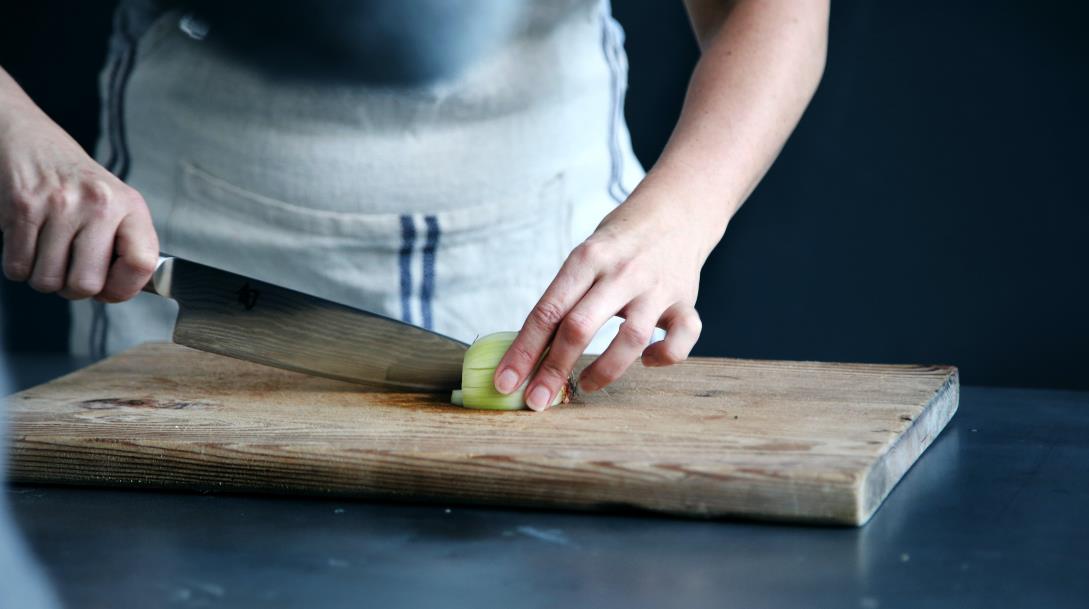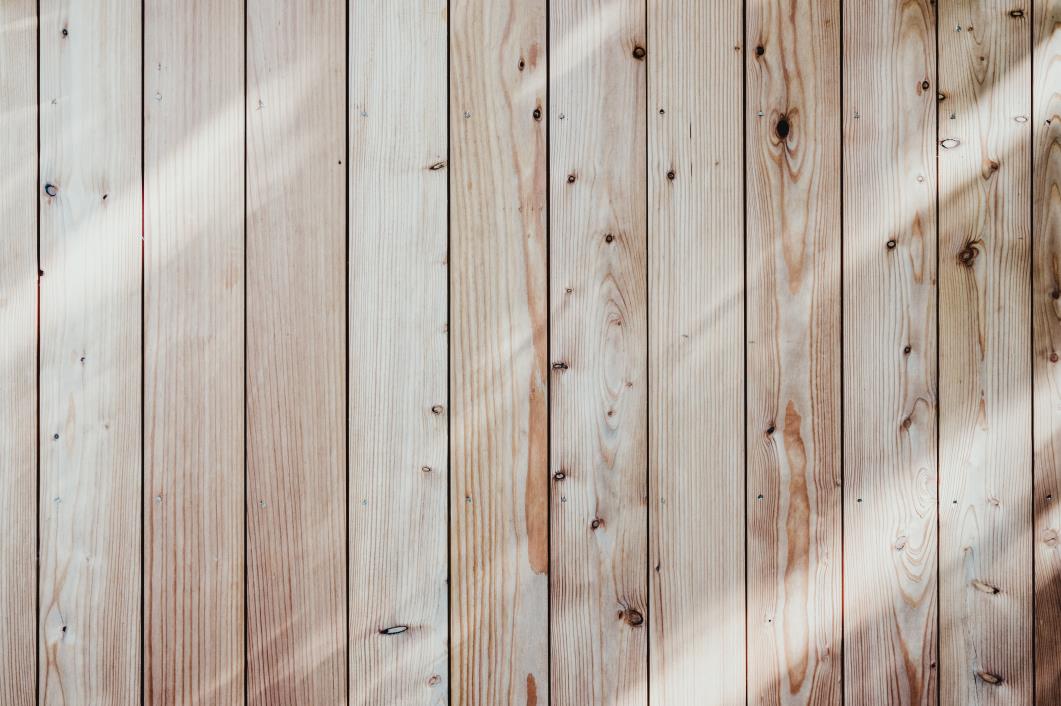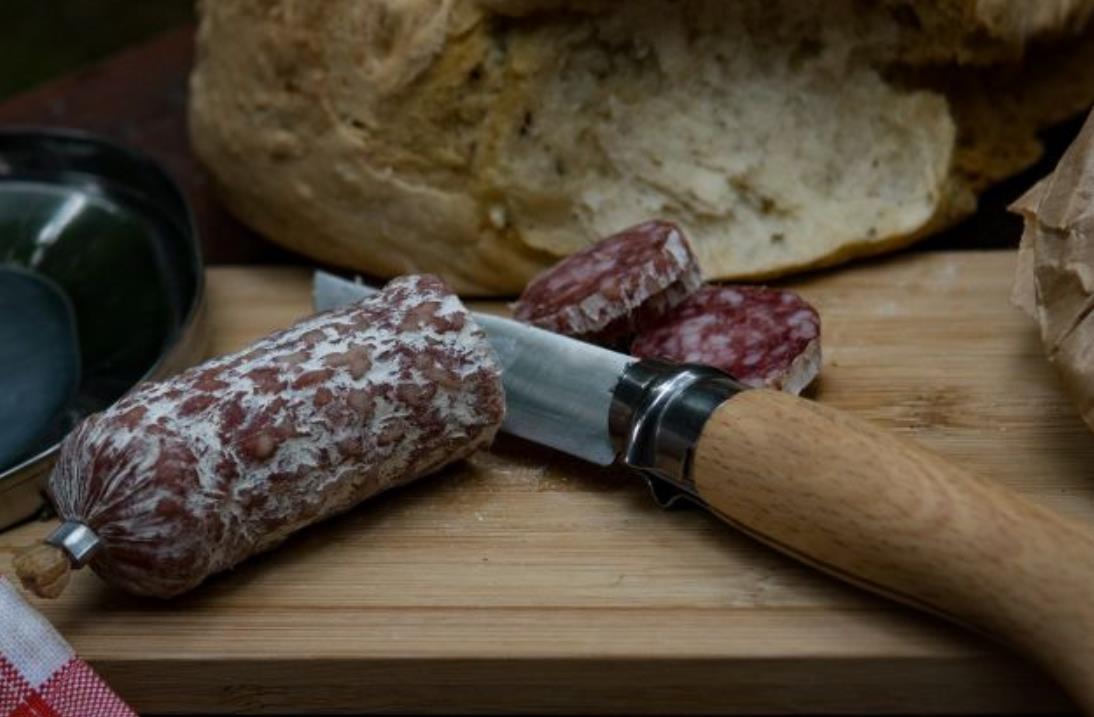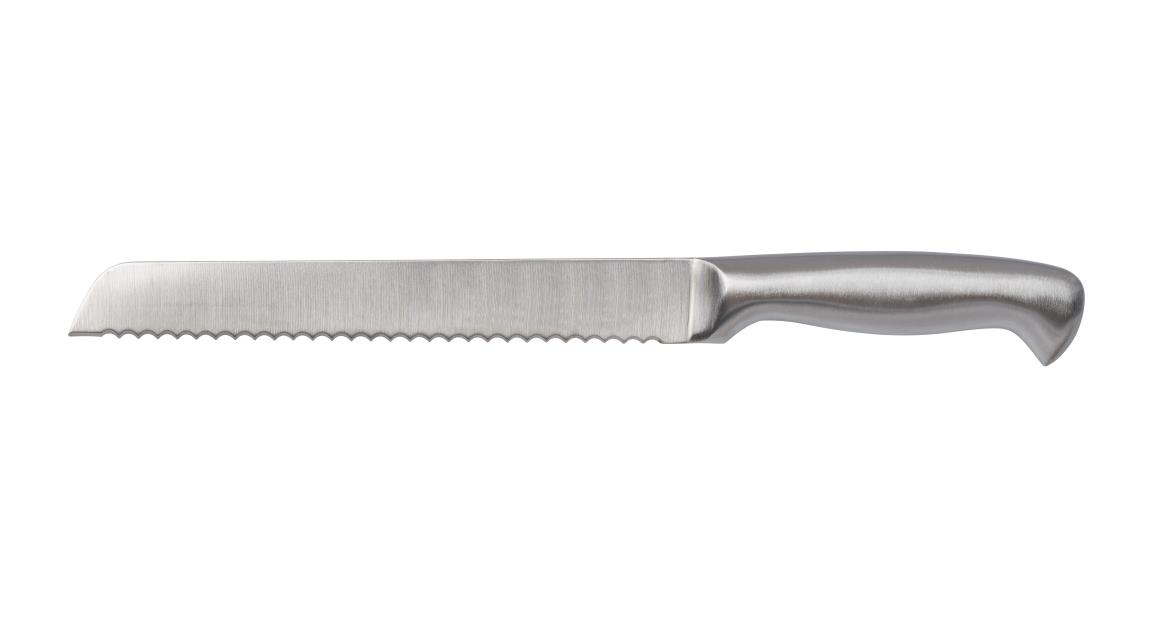For years, the blade has taken the spotlight as the most important part of the knife. But, people tend to overlook the aspect which makes using the knife possible- the handle. The kitchen knife handle is as essential as the sharp end because without it, you lose the functionality of the kitchen knife.
The handle is what makes a knife an extension of your hand. It is the part where you hold onto to use the knife. Knife handles are available in different materials and shapes to accommodate different needs, usage, and grips.
From the types of knife handles to how to care for them, I’ll walk you through all the information you need to know about kitchen knife handles.
Table of contents
How does the handle affect your knife performance?
The knife handle’s material is one of the things that can make or break the kitchen knife’s quality, durability, and style. The material and design of the handle can affect your grip, hand control, and cutting performance.
The right knife handle will give you the best comfort and security as it can prevent slips and other accidents. In contrast, a bad knife handle can tire your hand and decrease your cutting performance.
Sharp-angled and squared-off handles are the most difficult to work with. These handles do not align with the natural contours of a human hand, making use difficult and painful.
How to hold a knife
Knowing how to hold a knife properly is critical for both efficiency and safety. By adjusting your grip, you can make more controlled and faster cuts. Holding a knife correctly prevents the blade from slipping, preventing kitchen accidents. So, if you love and treasure your fingers, keep reading to learn the proper way to hold a knife.
The handle grip and the pinch grip are the two most common grips in holding a knife. With the handle grip, your hand has no contact with the blade, and all your fingers are gripping the handle only. It’s comfortable, but it offers limited control.

Experts recommend the pinch grip as it enables you to support the knife, reducing any tremors and increasing stability and control. This is the preferred grip of more experienced cooks, and here’s how to do it:
- Using your dominant hand, wrap your middle, ring, and pinky finger around the handle.
- Place your thumb on the knife blade and have your index finger curled around the other side of the blade. Then, with your index finger and thumb, squeeze the blade together to form a firm grip.
- Tighten your grip on the knife, so it doesn’t slip in your hands. Avoid shifting your fingers while using the knife to avoid cutting yourself.
- When carrying a knife, always keep the blade pointed down to avoid injuring yourself or someone else. If you drop the knife, let it fall to the ground and move out of the way; don’t try to catch it because you might catch the blade.
What you do with the other hand, is equally important. Your other hand is for holding food while you cut it, also known as the claw. To do so, place the ingredient on the cutting board in a stable position. Hold the ingredient like a cat, with your fingertips curled inwards to protect your fingers. While chopping, your knuckles should press against the knife as a guide.
When mincing, place the tip of your knife on the cutting board and hold it down with your free hand. Then rock the blade up and down to do a fine mince.
Different types of kitchen knife handle material
Knife handles can be made out of natural, metal, or synthetic materials, each with its own set of strengths and weaknesses. Here, I’ll walk you through each kitchen knife handle material to help you make the best purchasing decision.
Natural knife handle materials
This type of handles are made from organic materials that can be found in nature, it can be traced back to our forefathers, who used tools made entirely of what they could find in the wild. Chefs prefer natural materials due to their timeless beauty, flexibility, durability, and collectible value.
Natural knife handle materials include wood, bone, horn, shells, mother of pearl, and others. If you want a unique and classic-looking knife that exudes elegance, a natural handle is your best bet.
Wood

Wood is the most common among the natural handle materials. It is the perfect combination of strength, style, durability, and practicality. The wood’s natural grain adds an elegant touch to any blade, and it can be easily carved to your liking for increased grip. A good-quality wooden handle is not only beautiful and long-lasting but also economical as it is widely available.
Wooden handles can be both expensive and inexpensive, depending on the wood used. Many cheaper wooden handles are made of stabilized wood or wood made out of plywood with plastic resin. They look good and are more resistant to water damage, cracking, and breaking, but they may not last as long as the higher grade options.
Pros:
- Attractive and gives an elegant and unique appearance
- Easy to carve and etch for designs and ergonomic grip points
- Plenty of wood choices
- Durable when cared for properly
- Comfortable to hold
- Adds collectible value
Cons:
- Porous and prone to warping, rotting, and cracking.
- Hard to maintain and harder to clean
- Potential cause of splinters
- Rare woods can be expensive
Now that you understand why wood is the most commonly used material for knife handles, let’s check out some of the most common types of wood used for knife scales:
- Oak- If you’ve seen a gorgeous knife with inscriptions or designs on it, it was probably made of oak wood. Oakwood is considered the best wood for knife handles because it offers enough toughness and durability for more extended use. Natural oak wood is also cheaper and available in lighter shades of brown.
- Rosewood– Rosewood is another popular choice for making knife handles. It’s darker than oak and also a cheap material that can be found all over the world. This wood is strong and highly resistant to termites and other pests, making it ideal for kitchen knife handles.
- Ebony- Ebony is one of the most stunning types of wood you will ever see. It’s almost blackish shade, with dark brown or gray streaks, makes it incredibly gorgeous. Apart from its aesthetic appearance, it’s also strong, durable, and highly resistant to termites and insects. These are why we use ebony wood for our kitchen knives.
- Birch– Birch bark is a common material used to make kitchen knife handles. Because it is widely available, it is also used to make furniture and boats. Birchwood is also resistant to water, making it an ideal material for kitchen knives.

Bone and horns
Bone handles are popular among knife collectors because they add an exotic touch to any knife. Bones are mainly used for hunting and survival knives but are also used for kitchen knife handles. The handles are made from animal bones such as buffalo horns, deer antlers, elephant tusks, cow bone, and more. These handles can be colored and shaped for your desired kitchen knife handle design. However, they are often slippery, brittle, prone to cracking and deformation.
Pros:
- Can be carved into ergonomic shapes and eye-catching designs
- Available in different colors since it can be dyed
- Adds collectible value
- Beautiful and unique
Cons:
- Not suitable for heavy use as it’s porous and can be deformed over time
- Capable of cracking
- Slippery
- Sensitive to moisture and temperature
- Less durable
- Hard to clean and maintain
Wooden handle knives
True cutting power in the palm of your hand
Synthetic knife handle materials
Synthetic knife handles are created from man-made materials. With this in mind, they give users the freedom to customize and express their sense of style. Synthetic handles can be mass-produced or hand-crafted one at a time.
Pakka Wood
This is a manufactured composite of wood and plastics. Pakkawood is commonly used in Japanese knives due to its durability, wear and tear resistance, and aesthetic appeal.
It is more dense and water-resistant than its real-wood counterparts. If these are exactly what you’re looking for in a kitchen knife handle, check out HDMD knives’ collection.
Carbon fiber
Carbon fiber is any material made from organic polymers by combining carbon fibers with other materials such as resin. Carbon fiber handles are lightweight but extremely strong, with high heat tolerance, making them ideal for kitchen knives.
Pros:
- Strong and durable
- Lightweight
- One of the most unique in terms of appearance and properties
- Heat resistant
- High rust and corrosion resistance due to non-metallic fibers
Cons:
- Expensive
- Brittle
- Limited grip and contour capabilities
Micarta
Micarta is a brand name of a composite made of fiberglass, linen, carbon fiber, or other fabrics that have been soaked in phenolic resin and baked under high pressure. It is incredibly light, tough, and long-lasting. It’s stylish and smooth to the touch, but because it lacks texture, it’s slippery and slick, compromising your grip.
Pros:
- Extremely durable
- Rust and corrosion-resistant
- Lightweight
- Unique appearance
- Scratch-resistant
Cons:
- Expensive due to intricate manufacturing process and texture carving
- Smooth and slippery unless it’s textured
- Brittle
Metals

Metals are a popular material in creating kitchen knife handles. Most metal materials are not pure metals but alloys- a combination of a metal and another metal or non-metallic element. Alloys are used in kitchen handles instead of metals due to their increased durability and tensile strength. These knife handles are long-lasting and simple to clean. They are, however, slippery when wet, so manufacturers add rubber lines or engravings to increase grip.
Titanium
Titanium is a metal that’s popular for its strength, durability, and lightweight. It is often used as a coating for knife blades for extra protection and increases the blade’s corrosion resistance. Titanium handles are non-ferrous or do not contain iron, making them resistant to rust caused by oxidation.
Pros:
- Strong and durable
- Lightweight for better control and reduced fatigue
- Corrosion-resistant
- Has a warmer feel
- Can be texturized through bead-blasting
Cons
- More expensive
- Less resistant to scratching
- Far from indestructible as many marketers claim
Stainless steel
Stainless steel is more durable than titanium, and it will not scratch or dent easily. It is, however, heavier than titanium. It’s an iron-and-copper alloy that’s relatively inexpensive to produce. The stainless steel provides a smooth finish and an attractive appearance that will complement your kitchen. It’s also corrosion-resistant but not corrosion-proof, so it will rust if you don’t care for it properly.
Pros:
- Scratch and dent resistant
- Durable and cheap
- Corrosion-resistant
- Easy to clean and maintain
Cons:
- Heavier than other knife handles, making the knife dangerous to use.
- Slippery due to smooth texture, but can be textured or added rubber lines
Japanese vs. western handles

Knife handles are divided into two types: the Japanese or ‘Wa’ handles and Western ‘Yo’ handles. Both of these handles are extremely useful.
Japanese knife handles are made from a variety of woods. They have a tang that only goes halfway through or about 3/4 of the way down the blade, so the knife’s center of balance is toward the blade. Japanese knife handles come in various unique shapes, such as oval and octagon, and are more stylish. A Japanese knife handle is also lighter and doesn’t have rivets.
Western handles are the most common type of handle, and they are usually flat and riveted to the tang. They are generally heavier than Wa-handles. They are commonly made of composite materials such as pakka wood or micarta.
Choosing between the two types of handles should be based on what feels good and comfortable in your hand, as well as what looks the best. If you want something bigger and heavier, go with Western-style knife handles. However, Japanese knife handles are your best bet if you prefer a lighter and more elegant handle.
How to maintain your wooden handle
Knife handles made of wood require more care than those made of steel. Because it’s a natural material, it’s prone to rotting, splintering, and cracking if not properly cared for.
Aside from not putting your knife with wooden handles in the dishwasher, not soaking it in water, and keeping it out of direct sunlight for an extended period, it’s also essential to give them some thorough oiling.
Oiled handles look more beautiful because you can see the wood pattern. The acceptable oils for kitchen knives include Danish oil, Ballistol oil, Raw linseed oil, food-grade mineral oil, and walnut oil. These oils deeply penetrate the wood, prevent cracks from too much dryness, and increase resistance against temperature and humidity changes.
How to apply oil in the handle
- Before oiling, clean the knife handle with a damp cloth and dry it.
- Then, apply a couple of drops and let the oil absorb into the wood.
- You can rub the oil into your skin with your fingertips or a clean cloth. After 10 minutes, the surface of the wood will appear wet, indicating that it has received sufficient oil. If you notice any dull spots, apply more.
Final thoughts
If you’re looking for a kitchen knife, whether you’re a chef or a home cook, the handle is an important factor to consider. Kitchen knife handles have a significant impact on the performance, durability, and dependability of the knife. Some knife handles are ergonomically designed, while others are lightweight yet provide less grip.
With so many types of knife handles and kitchen knives available, it could be hard to choose the best. But choosing the best kitchen knife is entirely dependent on your preferences. If you’re unsure about what knife handle to choose, check out our collection of kitchen knives. Whether you’re a seasoned chef or a beginner, we will meet your needs.












